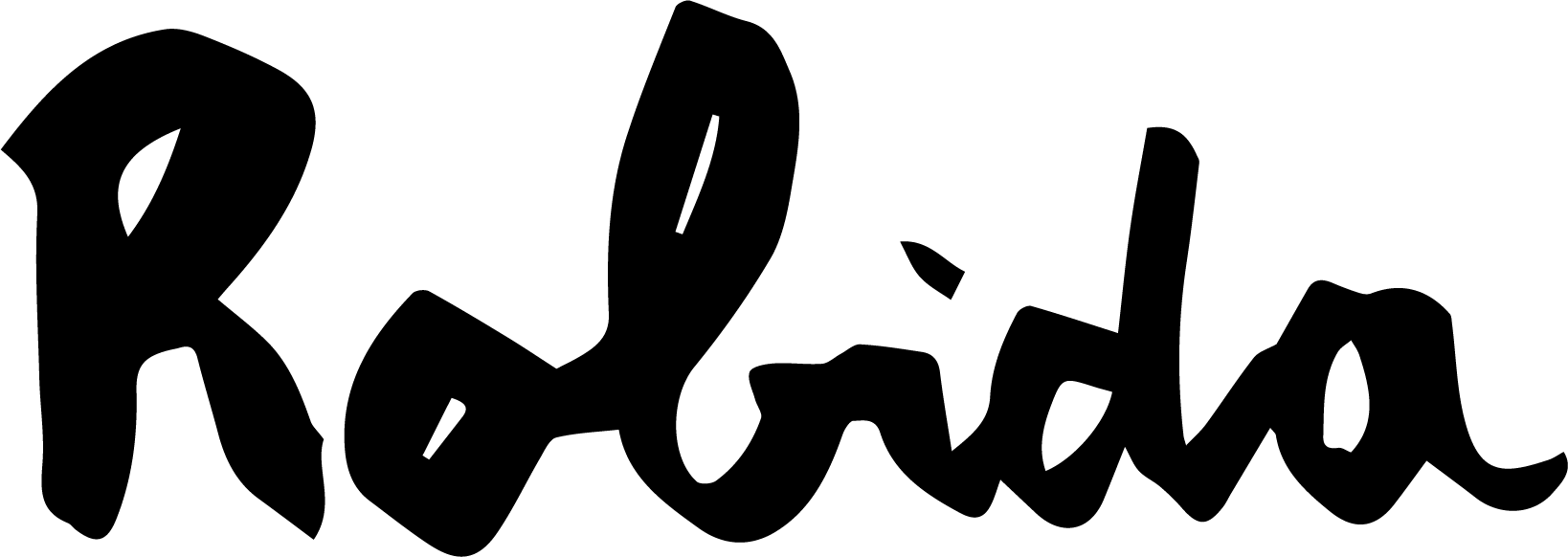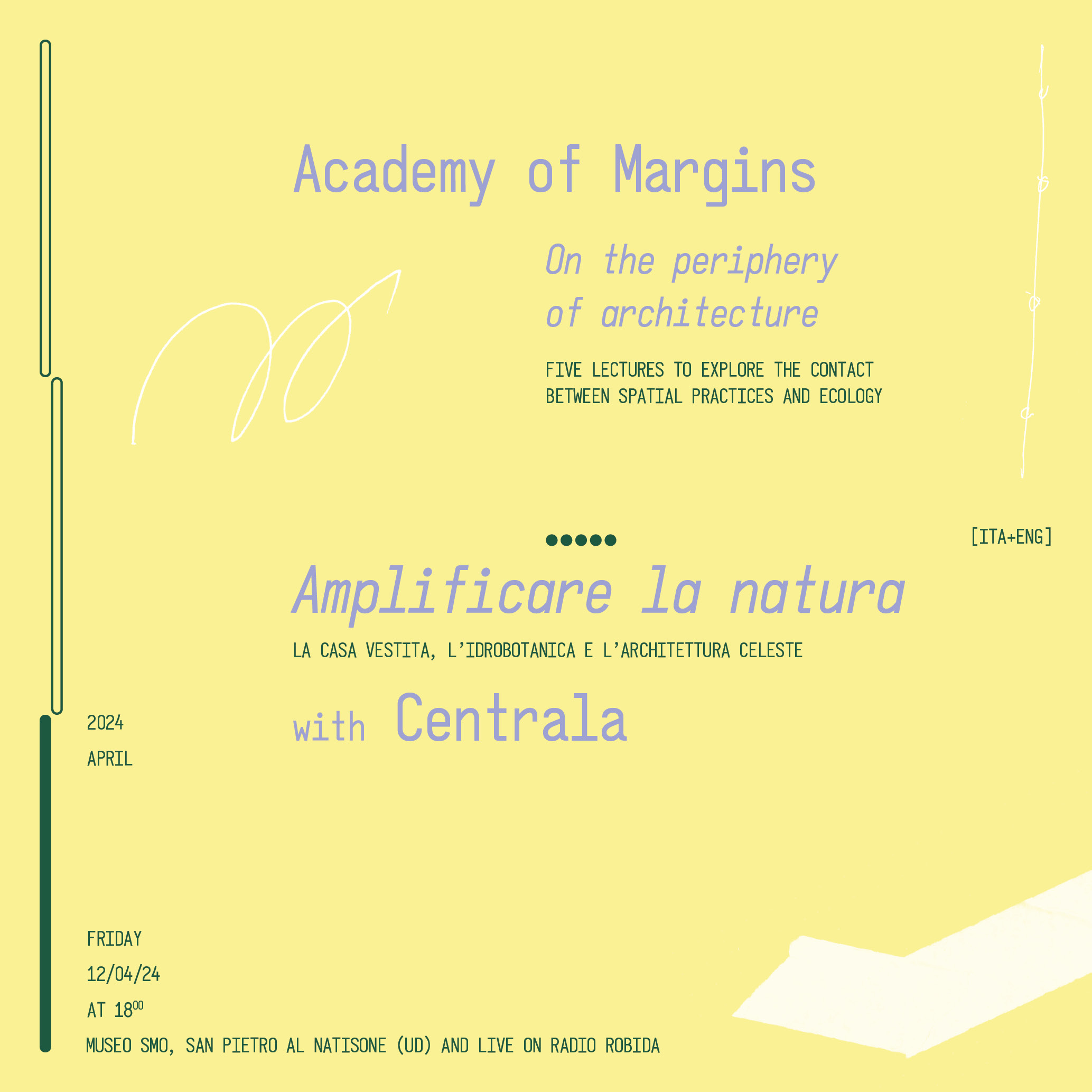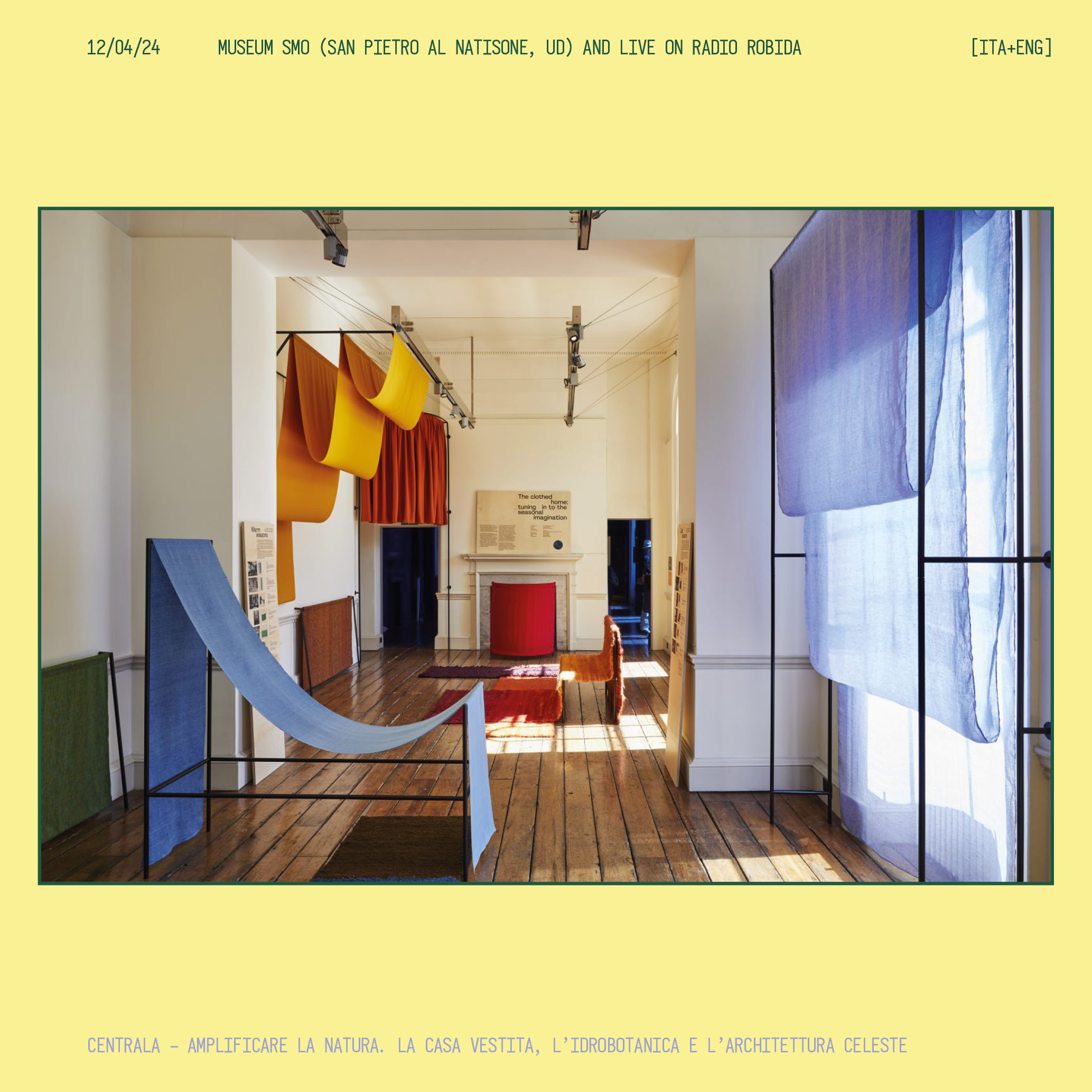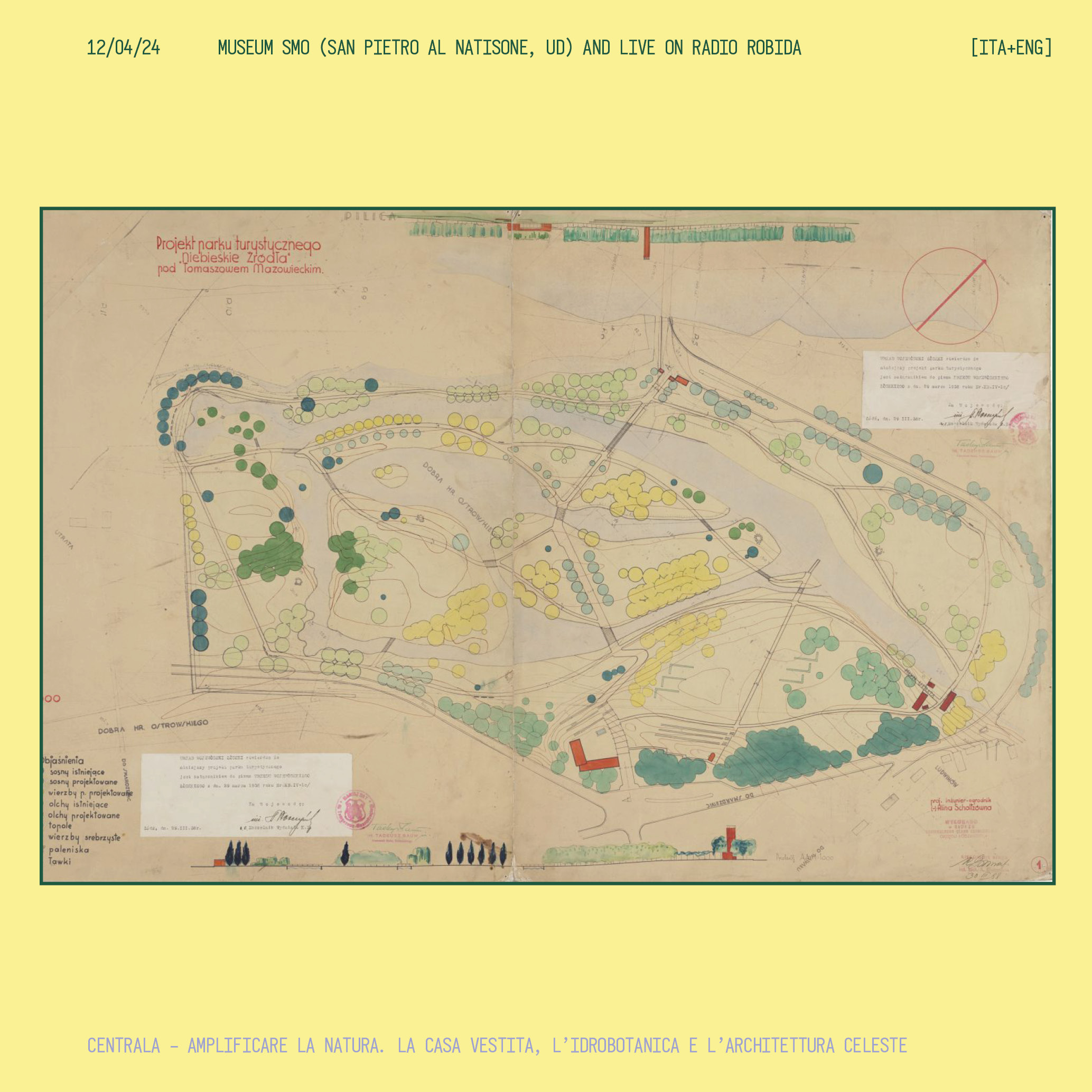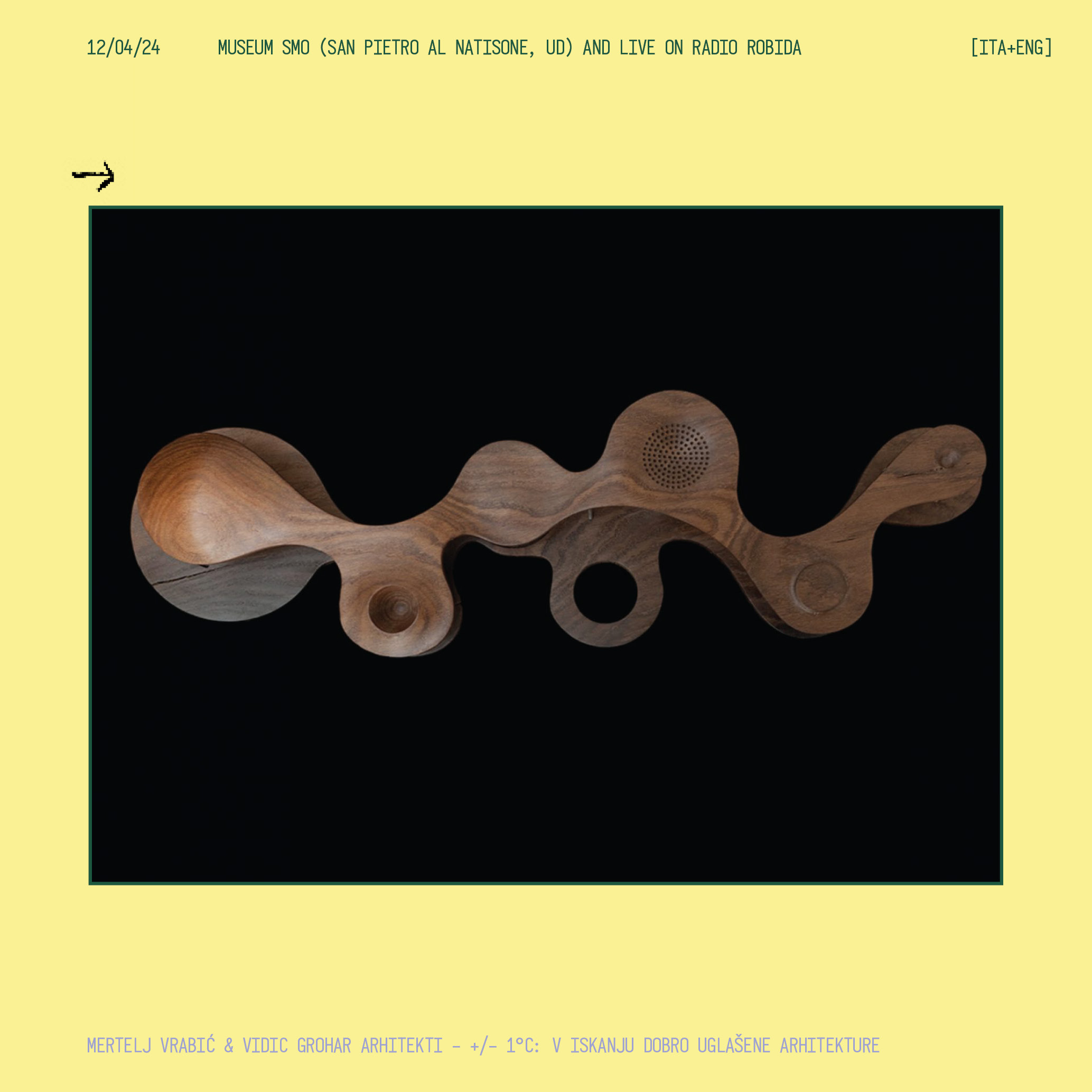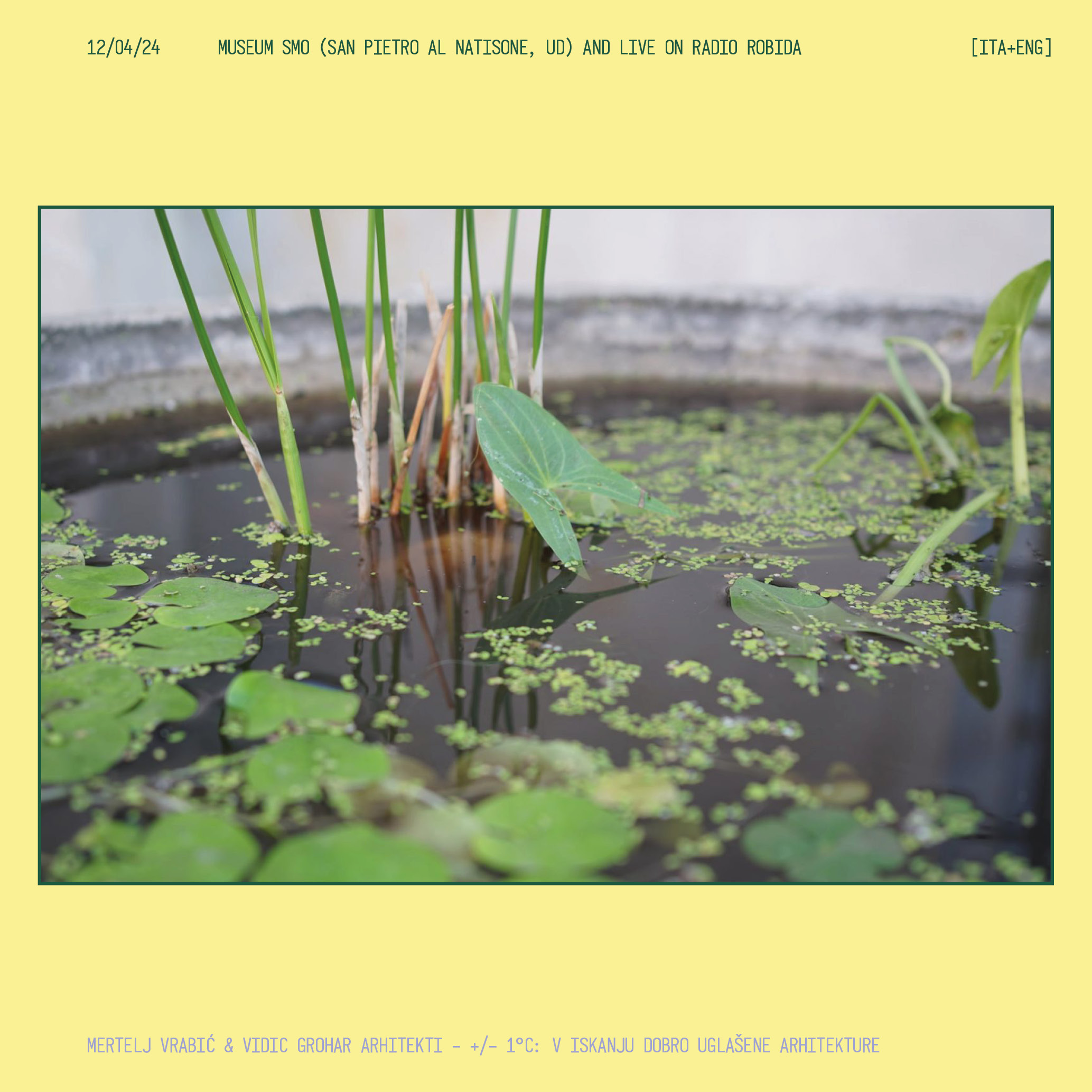On the periphery of architecture
Five lectures to explore the contact between spatial practices and ecology
more info about the cycle of lectures here
Friday, 12 April 2024 at 18.00
museum SMO, San Pietro al Natisone (UD) & live on Radio Robida
Amplifying Nature. On the Clothed Home, Hydrobotany and Celestial Architecture
lecture by Centrala
{language: Italian + English}
The causal aspect of nature, the material basis of biological existence, has been removed from the view of construction for living, working and resting. The Amplifying Nature approach stands for the opposite: the transcorporality of architecture, meaning that processes involved in the reproduction of the planet as we know it mediate the social routines in the form of buildings we inhabit. The universe speaks to us in the language of architecture.
In the lecture CENTRALA will present a variety of research projects based on a broad understanding of the biography of places they are destined to. Among these will be devices devoted to precipitations and atmospheric phenomena, exhibitions exploring textiles as interfaces for moderating microclimates in domestic interiors, the forgotten role of hydro-botany in architectural compositions, and landscape design as a discipline of both fine arts and life sciences through the work of Alina Scholtz. Moreover Małgorzata and Simone will describe the teaching methodology they established for the Kharkiv School of Architecture: their workshops encourage students to translate observations into design tools, where the main scope of the experiments is modelling processes instead of objects, and open up to seeing architecture in the context of various natural phenomena.
→ Guided by the idea of Amplifying Nature, CENTRALA – Małgorzata Kuciewicz & Simone De Iacobis create projects based on exploring the relationship between architecture and natural processes. For them, architecture is a flow, not merely a static form; and gravity, light oscillation, water circulation as well as atmospheric and astronomical phenomena are its building blocks. CENTRALA see architecture that combines the intimate, human scale with the scale of the planet as a means of tuning us into the rhythm of the world around us, strengthening our sense of connection with nature, opening us to experiencing its vanishing cycles, and direct attention to the relationship between micro-events and changes taking place on the Earth’s scale.
•
L'aspetto determinante della natura, base materiale dell'esistenza biologica, è stato rimosso dagli spazi destinati all'abitare, al lavoro e al riposo. L'approccio di Amplificare la natura rappresenta l'opposto, ovvero la trans-corporeità dell'architettura. Essa è intesa come l'insieme dei processi coinvolti nella riproduzione del pianeta così come lo conosciamo. Questi influenzano le nostre abitudini sociali attraverso gli edifici da noi abitati. L'universo ci parla attraverso il linguaggio dell'architettura.
Durante la lezione CENTRALA presenterà una serie di progetti di ricerca basati su un'ampia comprensione della biografia dei luoghi a cui i progetti sono destinati. Tra questi ci saranno dispositivi dedicati alle precipitazioni e ai fenomeni atmosferici, mostre che esplorano i tessuti come interfacce per moderare i microclimi negli interni domestici, il ruolo dimenticato dell'idrobotanica nelle composizioni architettoniche e la progettazione del paesaggio come disciplina sia delle belle arti che delle scienze della vita attraverso la opera di Alina Scholtz. Inoltre Małgorzata e Simone descriveranno la metodologia didattica che hanno stabilito per la Kharkiv School of Architecture: i loro laboratori incoraggiano gli studenti a tradurre le osservazioni in strumenti di progettazione, dove lo scopo principale degli esperimenti è modellare processi anziché oggetti, per vedere l'architettura nel contesto di vari fenomeni naturali.
→ Guidati dall’idea di Amplificare la natura, CENTRALA – Małgorzata Kuciewicz e Simone De Iacobis creano progetti basati sull’esplorazione del rapporto tra architettura e processi naturali. Per loro l’architettura è un flusso, non semplicemente una forma statica; e la gravità, l'oscillazione della luce, la circolazione dell'acqua nonché i fenomeni atmosferici e astronomici sono i suoi elementi costitutivi. CENTRALA vede l'architettura che combina la scala intima e umana con la scala del pianeta come un mezzo per sintonizzarci con il ritmo del mondo che ci circonda, rafforzando il nostro senso di connessione con la natura, aprendoci all'esperienza dei suoi cicli e dirigendo l'attenzione al rapporto tra microeventi e cambiamenti in atto su scala terrestre.
